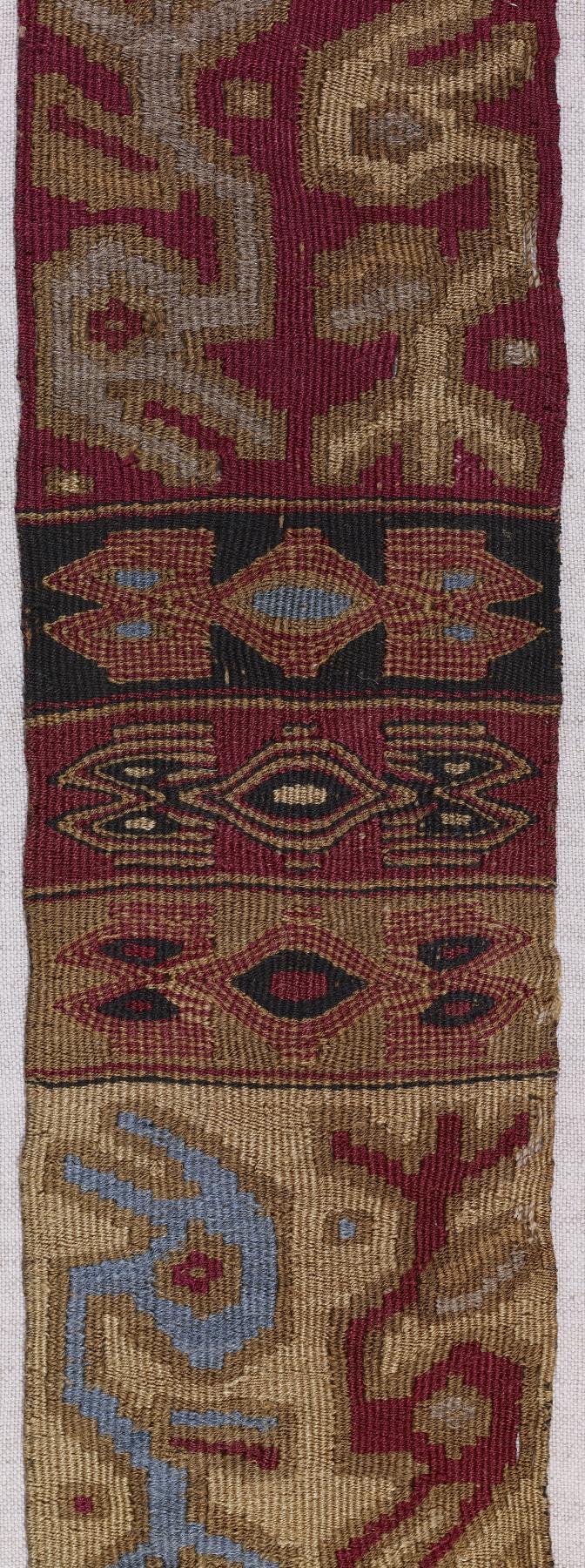Andean Textile Fragment
(Ancient Americas )
This is a very fine early Colonial Period Peruvian textile. It is a large portion of some type of band or other decorative fabric with selvedge edges only on the top and bottom. The band is thus a large fragment of a longer band, perhaps a wide tie band. It is an excellent example of discontinuous warp and weft weaving, a difficult technique at which indigenous Andean weavers excelled. Its survival into the Colonial Period is heralded by this art work, providing an excellent example of the continuity in weaving artistry during the volatile early Colonial Period in Peru.
The band's pictorial and decorative imagery is a rare combination of "classic" ancient Peruvian avian motifs intermingled with small panels of European geometric designs, the co-existence of these two pictorial traditions on the same textile indicating an early Colonial Period date.
The relatively rare fusion of motifs, weaving expertise, artistic quality, and excellent condition combine to make this textile an outstanding addition to the museum's collection.
Provenance
Provenance (from the French provenir, 'to come from/forth') is the chronology of the ownership, custody, or location of a historical object. Learn more about provenance at the Walters.
Bellas Artes Gallery, Santa Fe, NM [date and mode of acquisition unknown]; Jean and Sidney Silber, Baltimore, August 1985, by purchase; Walters Art Museum, 2012, by gift.
Geographies
Peru (Place of Origin)
Measurements
H of textile: 4 1/4 x L: 43 in. (10.8 x 109.22 cm); Framed H: 9 1/2 x L: 47 5/8 x D: 2 1/4 in. (24.13 x 120.97 x 5.72 cm)
Credit Line
Gift of Jean and Sidney Silber, 2012
Location in Museum
Not on view
Accession Number
In libraries, galleries, museums, and archives, an accession number is a unique identifier assigned to each object in the collection.
In libraries, galleries, museums, and archives, an accession number is a unique identifier assigned to each object in the collection.
83.769






